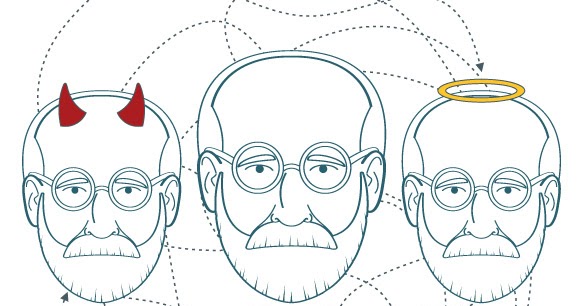
It is the last component of personality to form and usually begins to emerge sometime between the ages of three and five. It is made up of all the internalized beliefs, values, and morals that people learn from their parents and from their society. The superego is part of personality that strives for moral behavior. For example, if you are tired, the ego would keep you from taking a nap until you are at home in a bed instead of drifting off in the middle of the work day. In some cases, this might simply mean waiting to fulfill a need until you are in the right time and place, a process known as delayed gratification. The horse is the powerful force that propels the two forward, but it is the rider that controls the direction and course that they follow. This means assessing the situation and weighing the pros and cons of taking an action.įreud compared the relationship of the ego and id to that of a rider and horse. Where the id’s demands are unconscious, unrealistic, or at times unacceptable, the ego’s goal is to fulfill those desires in a way that accounts for reality. It operates on what Freud described as the reality principle. The ego develops from the id, but has been modified by the influence of the real-world. What Is the Ego?įreud described the ego as a part of personality that allows the id’s desires to be expressed in a way that is realistic and acceptable. If you were to try to satisfy an urge at the wrong time in the wrong setting, you might find yourself behaving in ways that are inappropriate or socially unacceptable. Not every need or want that a person experiences can be satisfied immediately. When these needs are not met, people may experience feelings of anxiety, tension, or unease. For example, feelings of hunger produce an immediate desire for food. The pleasure principle works to pursue the immediate gratification of any need or desire that a person has. The id controls all of a person’s instinctual behaviors. Since the id is primitive and instinctual, it operates on an unconscious level.Īlso, it is guided by what Freud referred to as the pleasure principle.

It is the only part of personality that is present at birth. Read more: What Is Personality Psychology What Is the Id?įreud believed that the id was the most basic and primal part of personality. This article describes Freud’s theory of the id, ego, and superego and explores how these three aspects of personality interact. In order to understand Freud’s theory, it is important to understand how he described each of these components of personality. The ego is the mediator between the two that tries to fulfill the needs of both the id and the superego while accounting for the demands of reality. The id is what drives our needs and desires and the superego strives for morality and perfection. According to Freud, it is the interaction of these three parts of the personality that influence how people think and behave. He called these the id, the ego, and the superego.

“The core set of ideas hold up,” adds Cleeremans.Sigmund Freud suggested that human personality was made up of three key elements. While Freud’s work on sexuality and women, for example, are largely dismissed, there’s still considerable value in broad structure of his work. He’s discredited for all sorts of political reasons that have nothing to do with the ideas,” he says.

ID SUPEREGO AND EGO MOVIE
“The ‘super-ego’ in a sense is connected with meta-cognition, with the idea that in addition to first-order awareness, the technical movie that we have as soon as we wake up and the field of sensations we experience and thoughts we have, there’s an additional monitoring and control system.”Ĭleeremans believes that much of Freud’s work has scientific value today. “The ‘id’ is what we call the unconscious today or the idea that there’s a vast reservoir of representations that sits there and influences ongoing processing but without being available to conscious awareness,” he says.

In a recent lecture on metacognition at this year’s Association for the Scientific Study of Consciousness conference in Buenos Aires, cognitive psychologist Axel Cleeremans pointed out that Freud’s Id-Ego-Superego structure roughly matches onto the Unconscious-Conscious-Metacognition structure of the mind studied in neuroscience today. While Freud’s concept of the superego played a more ethical role, encouraging the id and ego to follow moral rules, its role (much like metacognition) was to impose order.


 0 kommentar(er)
0 kommentar(er)
